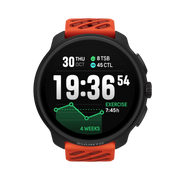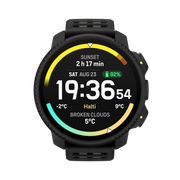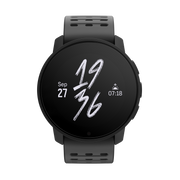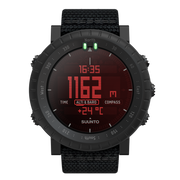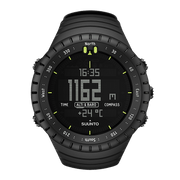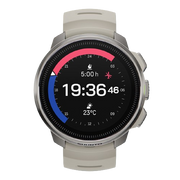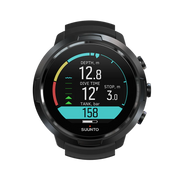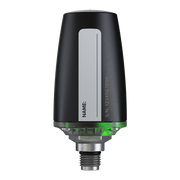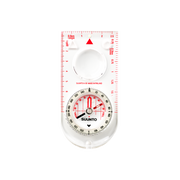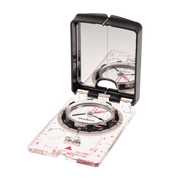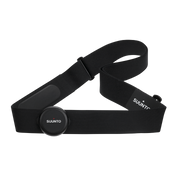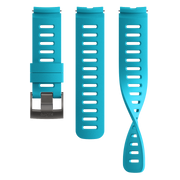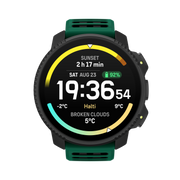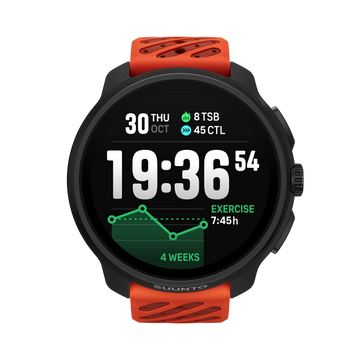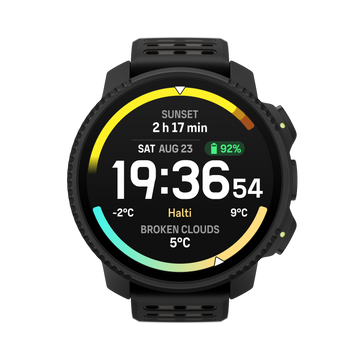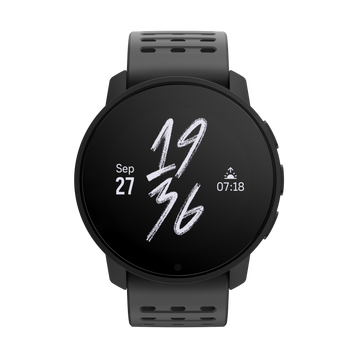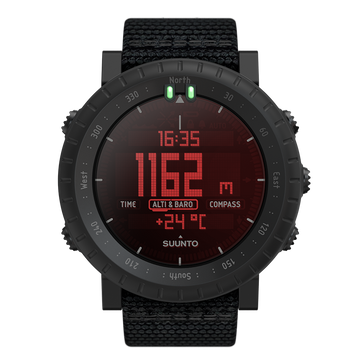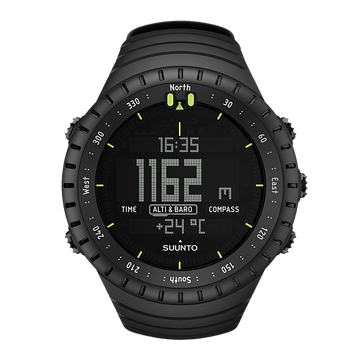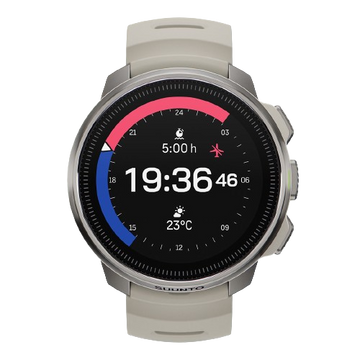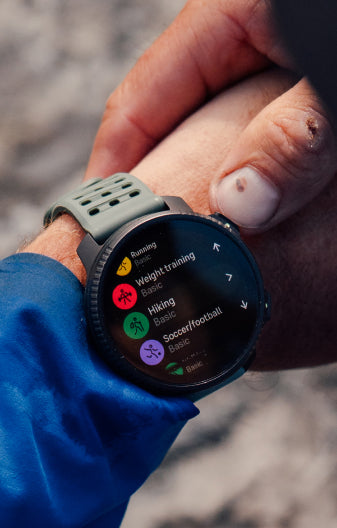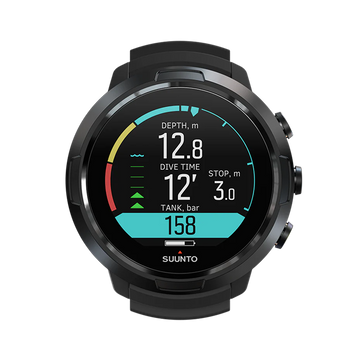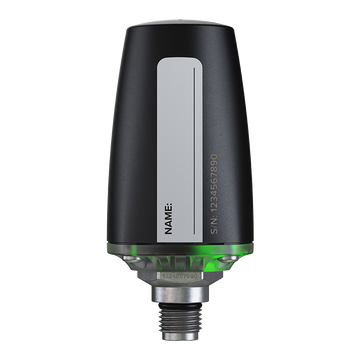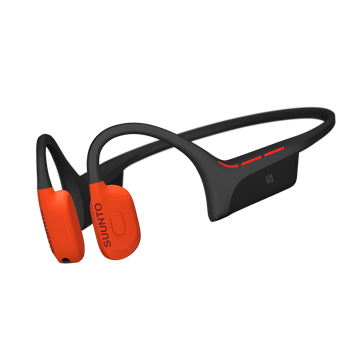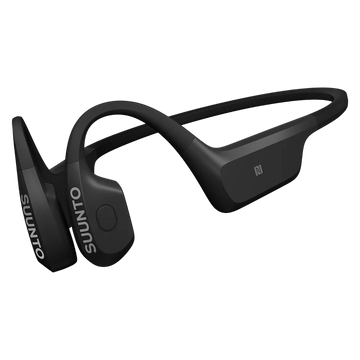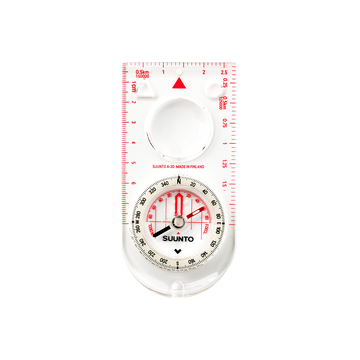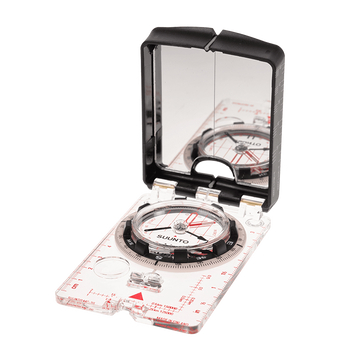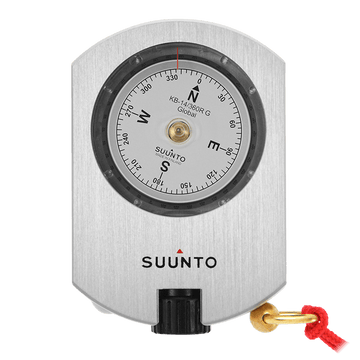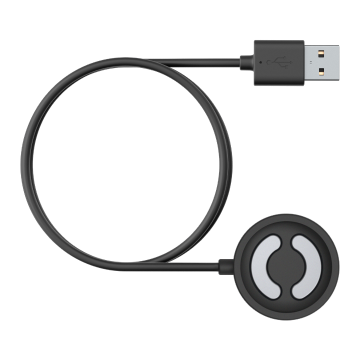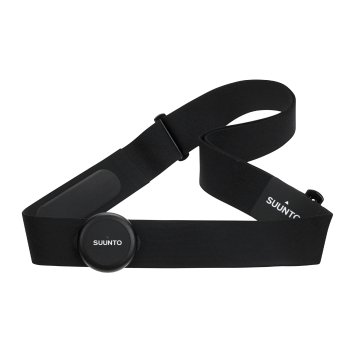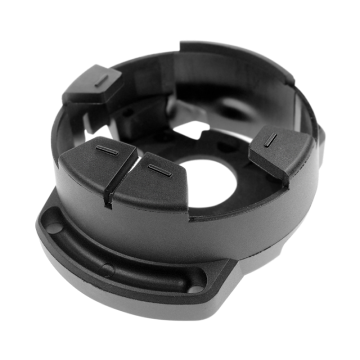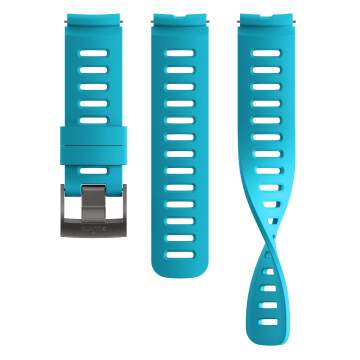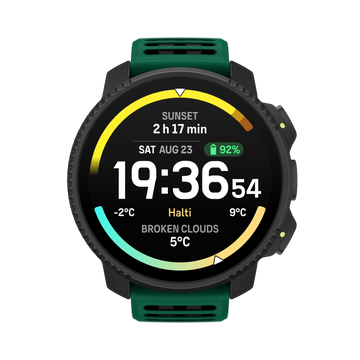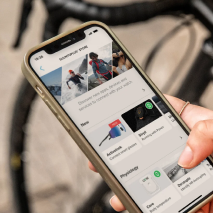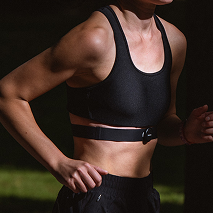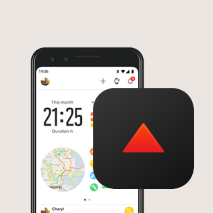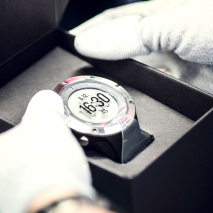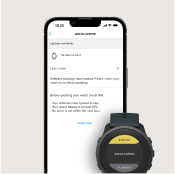

Suunto Blog

Suunto World Vertical Week 2023 Big Data
Suunto’s annual World Vertical Week has been growing in popularity year after year. Last week, on February 27 – March 5, over 153.000 Suunto users accepted the challenge and set out to gain as many vertical meters as they could. That’s 22% up from last year! Thank you everyone for joining.
During the Vertical Week, every human-powered outdoor activity counted towards the results. In the activity type rankings, there weren’t any major changes: ski touring activities had once again the biggest average ascent, followed by mountaineering and trail running.
Also, the country rankings follow quite a usual pattern: the two top spots for highest average ascents are owned by Austria and Italy – just like last year. In the third position, we have a new nation, Slovakia. Congrats! Portugal and Colombia are new names in the top 10.
Total ascent per country 2023
When looking at the total ascent per country, we can see a new leader: France dethroned Spain and took the top spot. Austria, Italy and Germany round out the top five.
France
Spain
Austria
Italy
Germany
Switzerland
US
Poland
Finland
Japan
Big – and huge – days are more popular than ever
When digging deeper into the data we start to see something interesting: big days out in the mountains and hills are getting more popular. The number of “1000-meter days” has grown by a whopping 75% from last year. During last week’s activation, Suunto community tracked over 12.000 activities that had over 1.000 meters of total ascent.
The same trend continues with activities that had over 2.000 meters of ascent: that number increased by 76% to over 2.000 activities. The number of really, really big days – days that had more than 3.500 meters of ascent – doubled from last year!
This same trend is visible also when looking at the data from another perspective: 176 participants collected more than 10.000 meters of total ascent during the week. That is twice as much as last year. Impressive!
As the days get bigger, the activity types change slightly: The biggest portion, 40%, of 1000-meter days was ski touring while trail running covered 25% of the activities. In the 2000-meter days ski touring and trail running was almost equal at 32% and 30% respectively. A surprise comes with the 3500-meter – or “10000-foot” – days: there suddenly running has the biggest share with 28% of the activities followed by ski touring (22%) and trail running (21%). Some runners have really pushed it last week!
Country rankings for different activities
Ski touring (avg for all countries 929m)
Switzerland 1.033m
Austria 1.005m
Italy 994m
Spain 940m
Germany 936m
The 1000-meter mark is a clear goal for skiers. Switzerland is in the top spot – just like last year.
Mountaineering (avg for all countries 676m)
Czech Republic 788m
Switzerland 760m
Germany 755m
Japan 717m
Poland 699m
Mountaineering has a new winner: The Czech Republic climbed to the top spot for the first time!
Trail running (avg for all countries 421m)
Japan 852m
Portugal 707m
Italy 620m
South Korea 536m
Spain 528m
Switzerland 508m
Austria 443m
Slovakia 413m
Slovenia 391m
Thailand 382m
Japanese trail runners crushed it again! Also, other Asian nations, like South Korea and Thailand proved that uphill is the way to run in that corner of the world.
Mountain biking (avg for all countries 387m)
Italy 516m
Spain 515m
Portugal 453m
Switzerland 446m
United Kingdom 386 m
In mountain biking, Italy rose from the second spot last year to number one this time. Forza!
Hiking (avg for all countries 221m)
Italy 441m
Slovakia 426m
South Korea 373m
Thailand 349m
Japan 337m
Another crown for Italy – and another activity ranking where Asian countries are strong.
Cycling (avg for all countries 182m)
Spain 417m
Portugal 394m
Italy 369m
Slovenia 306m
South Africa 248m
Spain, the top destination for winter cycling in Europe, was not a surprise leader in the cycling ranking. A welcome addition to the list was South Africa, nicely adding yet another continent to the top lists. Along with several European countries we had nations from Asia, Africa, South and North America amongst the top performers. Awesome!
Nordic skiing (avg for all countries 180m)
Japan 418m
Slovakia 411m
Spain 377m
Czech Republic 357m
Poland 335m
This list looks quite different from last year! Japan takes its second top spot in a slightly surprising category to complement its win in the trail running category. The usual suspects for Nordic skiing, Norway (277m), Sweden (209m) and Finland (125m), did not reach the top of the rankings this time.
Running (avg for all countries 100m)
Switzerland 157m
Slovenia 137m
Portugal 131m
Czech Republic 127m
Norway 125m
Running, the most popular activity overall, is not the king of Vertical Week: its average ascent is the smallest, exactly 100 meters. However, in the leading nation, Switzerland, the average ascent for running was over 50% more than that.

World Vertical Week 2023 photo competition winners
As always, Vertical Week inspired the Suunto community and resulted in some incredible performances — and photography!
We scoured through all the shots on Instagram tagged with #verticalweek and found it hard to choose our three winners for this year’s photo competition. Thanks to everyone who participated.
Here are the winners!
Following his Suunto 9 Baro in the Tatras
Motion designer, photographer and passionate Polish hiker Lukasz Pabian shared this shot he captured while hiking to Czerwone Wierchy, the Red Peaks, in Poland’s Tatra mountains. He’d been sitting at his desk most of Vertical Week, waiting for his chance to get out into the mountains. When it finally came, it started out a beautiful day: clear, sunny and windless. But weather in the mountains is notoriously fickle.
“When a strong wind arrived, everything started to pick up speed, I had to speed up,” Lukasz says. “The clouds covered the other peaks more and more and the sun was already setting behind the peaks - it was getting dark, the visibility in the clouds was less than five meters. Everything around me was white, the ground was white from snow, the air was white from fog. Never before had I needed my Suunto 9 Baro as much as I needed it then. I had the route saved in my watch that I was supposed to follow. The visibility dropped to a few meters and I was still up on the ridge by the time evening came. There is rarely internet access in the mountains so I couldn’t use a map app, but thanks to my Suunto I was able to get back to the valley and eventually home safely. It was an amazing experience, a great hike, and I took some cool photos, stepped out of my comfort zone and had an unexpectedly challenging time.”
This is what World Vertical Week is all about!
Ski touring above Davos
Swiss mountaineer, beginner paraglider and Alps explorer Florian Cotting shared a shot he got on a five-day ski-touring trip from Bergün to Davos. The lack of snow in the Alps this winter forced him, his girlfriend and a few friends to embark on a spontaneous, mostly unplanned trip.
“We were alone up there with an average of 1500 m of ascent a day,” Flo says. “The photo I chose was the second to last day of our journey and it was just after we put the skins back on for the second time that I took it! We went back down on the other side of the pass and my girlfriend asked: ‘let’s go back up for a third time?’” .
That’s the spirit!
Lighting an ice curtain above Salzburg
Austrian mountain lover, trail runner and ski tourer Anna Wacha lives near Salzburg, Austria and is blessed with endless mountains to explore with her husband, family and Chilli, her friendly dog.
“The picture was taken on a skitour with my husband, my mom and a good friend,” Anna says. “The mountain we were going to is called Hocheiser (3206 m). The tour starts at Enzingerboden and, after a short walk, you have to pass a tunnel and at the end of this tunnel is a big curtain of ice. In my shot you can see our headlamps lightning up the ice.”
Lead image: © Philipp Reiter

10 SuuntoPlus sport apps for runners
Suunto’s sport apps are easy to use watch functionalities that enhance your experience with your Suunto watch with use case specific benefits. Sport apps are easy to use, too: Simply browse the selection in Suunto app’s SuuntoPlus Store, select which ones you want to use on your watch and activate them before starting an exercise.
Here are 10 popular sport apps for runners. Take a look – and take them for a run!
From left to right: Anaerobic threshold test, Cooper test, Ghost runner, Half marathon time estimator and Last km (or mile) SuuntoPlus sport apps.
Measure your anaerobic threshold
The threshold test sport app is used to estimate your anaerobic threshold pace and heart rate. This can then be used to set your training zones. In addition to finding the right intensity zones, this test helps you evaluate your progress.
This test is quite demanding as it will require a 30-minute full effort run.
Challenge yourself with the classic Cooper test
Cooper test, a 12-minute all-out effort is a classic! The distance you cover during the test correlates with your maximum effort in the middle distances and can therefore be used to estimate your VO2Max value. The test will also give an estimation of your 10 km and half marathon race results.
Pace your race
Get a live estimate of your finishing time based on your pace so far. There are separate sport apps for marathon, half marathon, and most common ultra-distances.
However, race time estimator is not only useful in pacing races: When preparing for a race, especially during harder tempo runs, it is motivating to see how this pace equals the potential race time. For example, if your pace is 05'08/km during a high paced training run, it would equal 1:48'00 duration over a half marathon distance.
Pace your run
When trail running in a technical terrain the current pace can be changing so rapidly that it often is not very meaningful. The Last kilometer sport app gives you a live, rolling kilometer pace to follow.
Chase a ghost runner
Catch the virtual ghost runner to practice your pacing or just for fun.
From left to right: Manual intervals, Manual intervals for hill repeats, Cadence Coach, Loop and Hydration alert SuuntoPlus sport apps.
Intervals made easy
Manual intervals sport app helps you control your interval sets without pre-planning: During recovery it will show you the results of each rep and during the effort it will show you values such as the number of intervals you have done, the interval duration, distance, and pace & heartrate. After your workout you can see each interval in Suunto app’s lap table.
Data for your hill repeats
A separate Manual intervals sport app is available for hill repeats. It works like the regular Manual intervals sport app (see above), but this one highlights data that is relevant especially when running uphill. This does not require pre-planning, so you are in control during the hill repeat session!
Work on your running technique
The Cadence coach will show you live cadence and stride length. This tool helps you monitor your cadence and follow the changes while you work on your running technique or change your running style.
Get location-based laps automatically
Automatic location-based lap insights help you analyze the stats for each loop. This is an excellent feature for repeatedly running the same loop. Loops can be viewed afterwards in Suunto app.
Stay hydrated
The drink reminder sport app helps you stay hydrated during long workouts and races. You will get a drink reminder every 10, 15 or 20 minutes depending on the sport app you have selected. You will also be able to follow the total volume consumed. Remember, hydration needs are individual and depend on the exercise intensity and current conditions.
Images: Philipp Reiter Athlete: Ida-Sophie Hegemann
Watch and learn more about SuuntoPlus Store
READ MORE
Learn how to get started with SuuntoPlus sports apps
How to run a sub 3h marathon
The lazy runner's guide to a marathon

Unlock your interval training and watch your running improve
Norwegian trail and mountain runner Stian Angermund needs no introduction in trail running circles. He’s a two-time winner of the Salomon Golden Trail World Series (2018 and 2021) , holds the record of the Zegama-Aizkorri trail race and has won a number of iconic vertical k races.
Stian, 36, began competitive endurance sports in his teens and started taking on mountain races in his 20s. Now he also enjoys coaching fellow athletes to help them achieve their goals. Interval training, he says, can get fantastic results when done properly and consistently. Read on for his advice and check out his second post with three specific interval sessions.
Learn how to build your interval workouts using the Workout planner in Suunto app and follow the session in real time on your Suunto watch.
Stian lives in Bergen, Norway.
Master interval training
By Stian Angermund
What is interval training?
Interval training is when you break a training session into hard and easy intervals. For example, you run hard for four minutes, then walk for two minutes, before you run hard for another four minutes. You repeat this cycle several times. Intervals can be short, from just a few seconds or up to many minutes. The recovery time is often shorter than the hard interval time.
Intervals can be measured in time (duration: one, two or four minutes) and in length (distance: 200m, 400m or 1000m etc).
Why should you do interval training?
Interval training is a good way to improve your aerobic and anaerobic endurance. When having the short rest in between the intervals, your body is recovering, and you can do a bigger volume/greater amount of time at a hard intensity than by constant training at the same intensity.
How often should you do intervals?
There are many ways to get in good shape - we are all different. Some athletes do two intervals a day, several times a week, and some do only one interval session a week. If you haven’t run intervals before, I recommend starting with one interval session a week and then increasing to two sessions. It’s very individual when the body is ready and can handle two or more interval sessions a week.
To ensure you do a quality interval training session it’s essential you have fully recovered from any earlier training sessions. If you have sore muscles or feel tired when you are about to start your interval training, then it’s not the right time. You should skip or postpone the planned interval session.
How long should the intervals be?
The duration of the intervals will vary according to the goal of the session and the level of the athlete. The total volume of the interval session is the time of all the intervals. ● For example, 4x4 minutes with two minutes recovery in between. The total interval time here is 16 minutes. We do not include the recovery time. The total volume must not be longer than what you can manage. If you run 6x3 minutes and you see that you run slower and slower for each interval, then it might be that the total volume is too much or you have started too fast.
The different types of intervals
VO2 Max
To improve the Vo2max (the maximum amount of oxygen the athlete can utilise), the intervals are often from 2 to 6 minutes long. This type of interval is completed in the high-intensity zone. An intensity where you can feel lactate in your muscles. The number of intervals can be from four to 12. The total volume is often between 20 and 35 minutes. The recovery between the intervals is often one-third of the time of the interval.
Intervals to improve the anaerobic threshold
This interval session will be of a lower intensity than the Vo2max session. It can be difficult. to find the right intensity for this session. When you are at a level for improving your anaerobic threshold, you don’t feel any lactate in your muscles. You only know this limit when you go above and your muscles start to increase lactate.
Because threshold intervals are of a lower intensity than for improving your Vo2max, you can do a bigger volume. The intervals can be from five minutes to more than half an hour. The total volume can be from 30 minutes to more than one hour. The recovery can be one minute to a few minutes. For this type of interval training, it is also important to have quality and to not do more than you can manage and recover from. If you run slower and slower during each interval or need to push to a higher intensity to keep up, then it's better to stop the session.
Threshold test
You can do a test to find your threshold level. Here’s how: after a solid warm up, run as fast as you can for 40 to 60 minutes. The average pulse for the test will be around your anaerobic threshold. This threshold will be different from one activity type to another. That means the anaerobic threshold is not the same when you run and when you cycle or ski. Therefore, you should do your threshold test in the same activity as you want to improve.
Use the SuuntoPlus Threshold test to find your threshold level.
Why is even pacing important when running intervals?
In order to get as many benefits as possible from the interval session, it is important to pace the interval right. You can use a pulse belt to help you pace the interval correctly. If you run on a treadmill or do the intervals on the same course, then ideally all the intervals should go around the same pace. That means the pulse will be lower in the beginning and increase during the session. If you start too hard, then you will not benefit as much for the session, and the recovery might take longer.
What kind of intervals are good to start with?
If you can run without stopping for 20 minutes, then you can start running intervals with a volume from 10 to 16 minutes. It can be 5x2min or 4x4min. If you can’t run this long, you can start with a run and walk session - one minute on/off until you can do this for 30 min. Then you can run two minutes and walk a minute. Then, three minutes running and one walking. Continue like this until you can run 20 minutes. After this you can start with the intervals described above.
What kind of intervals will help trail runners?
All the intervals mentioned earlier can be good for trail runners. If you run trail races with some elevation gain, It is a good idea to run the intervals up, or up and downhill. It is often hard to start on a new uphill after running a downhill, which is the case in trail races.
A way to train trail intervals is to run intervals uphill then jog easy down to where you started the interval as recovery before running another uphill interval. This can be hard for the legs, but it will prepare you for a trail race. The recovery period will be longer for uphill/downhill sessions than for flat or road intervals.
How to build an interval session?
Intervals can be done in many ways.
● Equal: 5 x 5 minutes, 4x4 minutes, 2x2 minutes● Pyramid: 3-5-7-7-5-3 minutes. ● Countdown: 8-7-6-5-4-3-2-1 minutes
There are many ways to run intervals. Let your imagination help you. Mentally it can be good to do some variation of your intervals, rather than run them the same way every time. You can change their duration, pace and terrain.
To get coaching from Stian visit: https://stianangermund.com

3 interval sessions for trail runners
In his previous post, Suunto ambassador, running coach and champion Stian Angermund broke down interval training and how to get started with it. “If you can run without stopping for 20 minutes, then you can start running intervals,” he said.
In this post, Stian gets more specific, providing three drills you can implement into your training regimen right now. Just keep in mind his advice in the previous post: “To ensure you do a quality interval training session it’s essential you have fully recovered from any earlier training sessions. If you have sore muscles or feel tired when you are about to start your interval training, then it’s not the right time. You should skip or postpone the planned interval session.”
Learn how to build your interval workouts using the Workout planner in Suunto app and follow the session in real time on your Suunto watch.
Three intervals sessions to get faster and stronger
By Stian Angermund
First things first, I recommend using your Suunto watch to guide your interval sessions. Your watch has a pulse ‘speedometer’ where you can see your running intensity. If you run intervals based on time duration, turn on your watch’s interval settings to help you through the session. You can contact your local gym for an anaerobic threshold and Vo2max test to find your intensity zones or use your Suunto to test your fitness.
Stian lives in Bergen, Norway.
Vo2MAX interval session
The goal of this drill is to improve your Vo2max.
For this session, you will run at a high intensity. The intensity should be around 90% of your maximum heart rate. At this intensity, you will feel some lactate while running.
Warm-up: Start with a 20 minute warm-up. Run 15 min easy, Then run one minute harder. Not as hard as your Vo2Max interval intensity. Run easy for one minute before repeating one minute of hard running. Run two minutes easy before starting the intervals. Now you are ready for the interval session.
The intervals: These should be run on trails and mainly uphill. If you have a long uphill, you can run the intervals uphill, then easy down, before continuing to run uphill again. If you don’t have a long uphill, you can make a loop, where you run a slack uphill during your interval, then a steep downhill down to start, before running the next interval.
Duration: The intervals during this session are four minutes each with a two minute recovery between them. After an interval, you’ll feel tired, but don’t stop or stand still - keep moving (active recovery). Do an easy jog or walk. If you stop, your legs will overflow with lactate, and it will be harder to run the next interval.
The number of intervals will depend on your individual level. If you haven’t run intervals before, you can start with four repetitions. If you are used to intervals and in good shape, you can do five or six intervals. Don’t push too much during the first interval. If you run your intervals as a loop, you can see the distance you cover during each four minute interval. The goal is to run the same distance in all the intervals, or maybe a few meters more for each interval. That means the first interval should feel easier than the following.
Cool down: After you have done the intervals, do a 10 to 15 minute easy run/jog. Drink and eat during your cooldown to optimize your recovery.
Anaerobic threshold interval session
The goal of this session is to improve your anaerobic threshold.
This session has a lower intensity than the Vo2max interval session. The intensity for this interval is around 82-87% of your maximum heart rate. The intensity should be under your anaerobic threshold. You should not feel any lactate during the session.
Warm-up: Start with a 20 minute warm-up. Run 15 min easy, then run one minute harder. But not as hard as your Vo2Max interval intensity. Run easy for one minute before repeating one minute of hard running. Run two minutes easy before starting the intervals. The intervals: This session can be done with a short and long recovery time. You can make it a short recovery if you have a long uphill or a loop. You can also run the same hill, up and down. It is often one of the hardest parts of a trail race to start another ascent after running downhill.The benefit of running up and down is that you will improve this skill for your race.
Duration: The intervals are eight minutes long and the recovery between them is two minutes, or the time you will spend running down to start again. The number of intervals will depend on your fitness. Your legs will not be heavy from lactate, but fatigue from moving uphill. For the less experienced, start with three intervals. For the experienced runner, you can run up to six intervals. You must be able to run the intervals at the same pace. If you get too tired, then stop the session. Do not sprint at the end of the interval, like on your way to the finish line of a race. The best training is to be disciplined about the pace. Then you’ll get more benefits.
Cool down: After completing the intervals, do 10 to 15 minutes of easy running or jogging. Drink and eat during the cooldown to optimize your recovery.
Downhill interval session
The goal for this session is to improve your downhill running skills. In this session, we don’t focus on the intensity. We focus on technique and try to increase your confidence. The session should be short. The reason for this is twofold: to be able to maintain concentration and to cause less impact on your legs. If you lose concentration, it’s easier to twist your ankle or fall. And a short session will have less impact on your legs’ recovery and total training volume.
You need to find a hill to run down for your workout. If you have an upcoming race, it can be a good idea to try to find a descent that is similar to one in your race. It can be rocky, muddy, steep, technical and so on. The duration of the interval should be up to two minutes.
The intervals: Start with defining your finish line. Then you walk uphill at an easy pace to your start point. The first interval is to run at an easy pace down to your finish line. Then walk up again. On the second interval, you will try to beat your first time. Repeat this six to seven times, each time trying to be faster than the previous interval. This is a fun activity with friends, but do be careful not to overdo it or get injured.
Cool down: Run easy 5 to 10 minutes after the intervals.
To get coaching from Stian visit: https://stianangermund.com

Manage your training with Suunto app’s Training zone
A progressive training load with adequate recovery and ways to follow progress will lead to a successful adventure or race.
Suunto is your daily companion to enhance your performance. The new training toolset in Suunto app’s Training zone is vast. Read on and learn what’s available. We are sure you will find your new favorite dataset to analyze your training and follow your progress.
To ensure you have the latest Suunto app version update your iOS app in App Store and Android app in Google Play.
Four new ways to look at your training
Am I training smartly? Is my training load progressive? Do I have the right intensity mix? What type of impact do my workouts have?
Training load
The training load theme in Suunto app’s Training zone gives you a good overview of this week’s training load compared to a six-week average. You will also see the daily training load split and the split by activity type. All of this will help you understand your overall physiological load and how much more you can – and should – still do this week.
The value of following your physical load weekly with comparisons to your long-term baseline is that you can look at this as a goal for the week. To gain some fitness, you might want to slightly increase the load for the week. To ensure recovery, keep the load level lower than your average.
Training intensity
Are you really doing both easy base training and higher intensity? Or is your training piling up in a single intensity zone, like tempo work in zone 3? The new Training intensity theme in Suunto app will help you understand your training better as you will see both the weekly intensity distribution and the six-week averages.
The workout intensity totals can be viewed as heart rate, pace, running power, and cycling power zones.
You can set your sport-specific training zones in your Suunto watch based on heart rate, pace and power. Suunto is following a five-zone model where your anaerobic threshold is at zone 4 /5 limit. You can find your correct training zones with a lab or a field test. SuuntoPlus Sports apps like the Anaerobic threshold test and the Functional threshold power test will guide you through a field test session.
Learn more about intensity zones.
Training volume
The sports you have done during the week are shown with duration, distance, load, and ascent. Sports are also grouped to give an overview of each type of sport i.e. running includes running, treadmill, and trail running.
Volume is compared with your six-week average.
As you follow your training volume, you can now easily ensure that you meet the numbers for your key sports any given week: It might be that as a trail runner, you want to get 3000 meters of ascent each week, or as a cyclist, ride 200 kilometers weekly. Your six-week average will help you match your personal benchmark.
Training impact
Suunto app’s Training impact is a new tool that helps you understand your training model and the physiological systems you are targeting. This will help you understand if you are doing what you were planning to do – and if you are missing something in your training.
Training impacts are defined as cardio and muscular impacts. Each workout gets assigned an impact such as “Aerobic” or “Speed & Agility”. Cardio impacts are based on workouts intensity, load, and duration. Muscle impacts are based on activity type.
The training model is identified based on your workout intensity distribution such as Polarized (most activities on low and high intensities, less in the middle), Sweet spot (training mainly between aerobic and anaerobic thresholds), and Base training (most workouts are in zones 1&2).
In addition to the current week, you will see the six-week average for your training impact.
As with other training insights, the impacts are illustrated with long-term reference. If your normal training week has two aerobic sessions, one VO2 max session and two strength sessions, and on Friday you are still missing those aerobic sessions, you know what to focus on during the weekend. This will help you check all the boxes.
Training impact is currently available on Suunto app for Android. Coming soon to iOS as well!
Lead image by Roger Salanova
READ MORE
Get feedback from the Suunto coach
Test your fitness with Suunto
Plan your interval workouts with Suunto app
Unlock your interval training and watch your running improve
